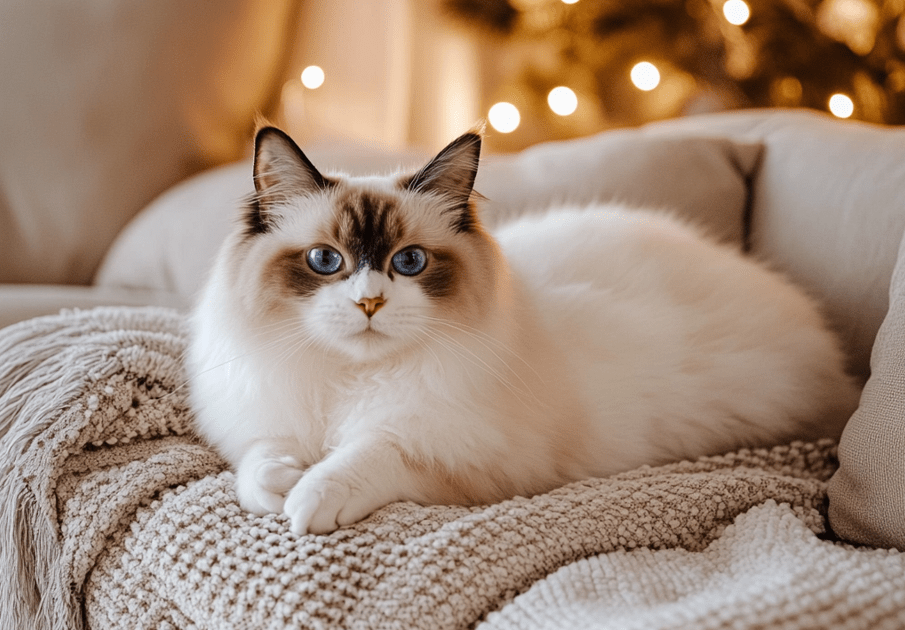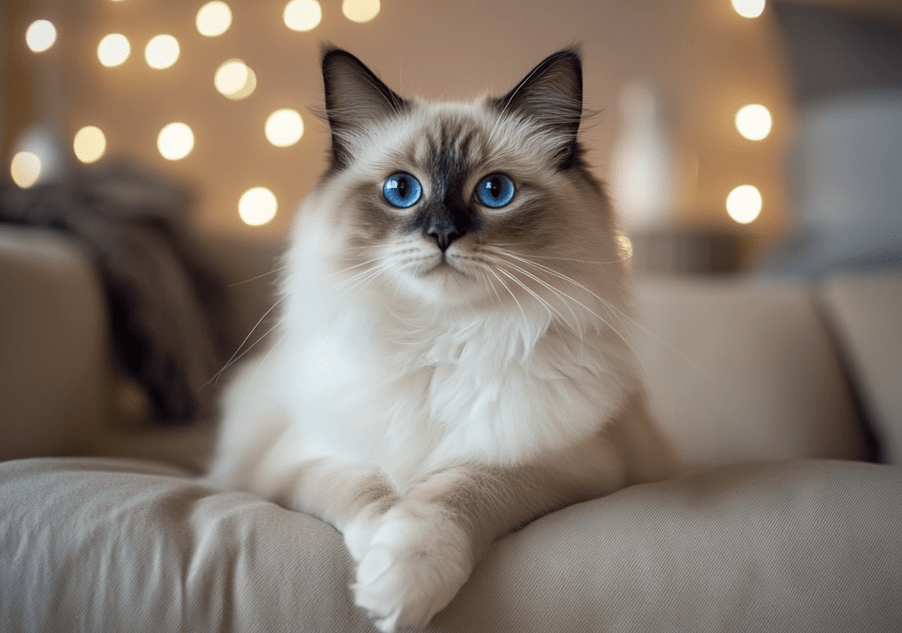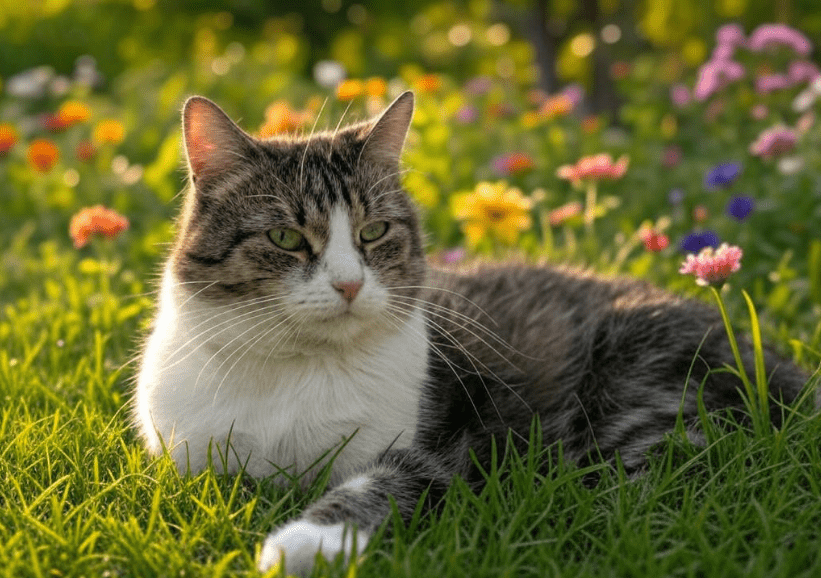
Ragdoll cats prefer indoor life due to their gentle temperament, affectionate nature, and physical characteristics, making them well-suited for a safe, controlled environment. These blue-eyed, plush-coated felines thrive in the comfort of home, where they can bond closely with their owners and avoid outdoor dangers. However, keeping a Ragdoll indoors requires careful planning to ensure their safety and well-being. This comprehensive guide explores why Ragdolls are happiest indoors, the risks of outdoor life, and practical safety tips to create a secure, enriching indoor environment for your beloved pet.
Introduction to Ragdoll Cats and Their Indoor Preference
Ragdolls, known for their docile demeanor and striking appearance, are a breed that naturally gravitates toward indoor living. The phrase Ragdoll cats prefer indoor life reflects their preference for the safety, comfort, and human companionship found in a home setting. Unlike more adventurous breeds, Ragdolls lack the street-smarts or agility to navigate outdoor hazards, making indoor life ideal for their physical and emotional needs.
This article delves into the reasons behind Ragdolls’ indoor preference, from their breed traits to environmental factors, and provides actionable safety tips for owners. From securing your home to enriching their environment, we aim to create the ultimate resource for Ragdoll owners, ensuring their cats live happy, healthy lives indoors. This aligns with your interest in delivering high-value, problem-solving content for cat owners.
Why Ragdoll Cats Prefer Indoor Life
Ragdolls are uniquely suited to indoor living due to their personality, physical traits, and bonding needs. Below are the key reasons they thrive indoors, supported by insights into their behavior.
1. Gentle and Docile Temperament
Ragdolls are famously calm and trusting, often described as “puppy-like” for their tendency to follow owners and relax in their presence.
Indoor Fit: Their laid-back nature makes them content with the predictability of indoor life, unlike high-energy breeds that crave exploration.
Risk Outdoors: Their trusting demeanor leaves them vulnerable to predators or aggressive animals, as they’re unlikely to flee or defend themselves.
2. Strong Bonding with Humans
Ragdolls form deep emotional bonds with their owners, preferring human companionship over solitary outdoor adventures.
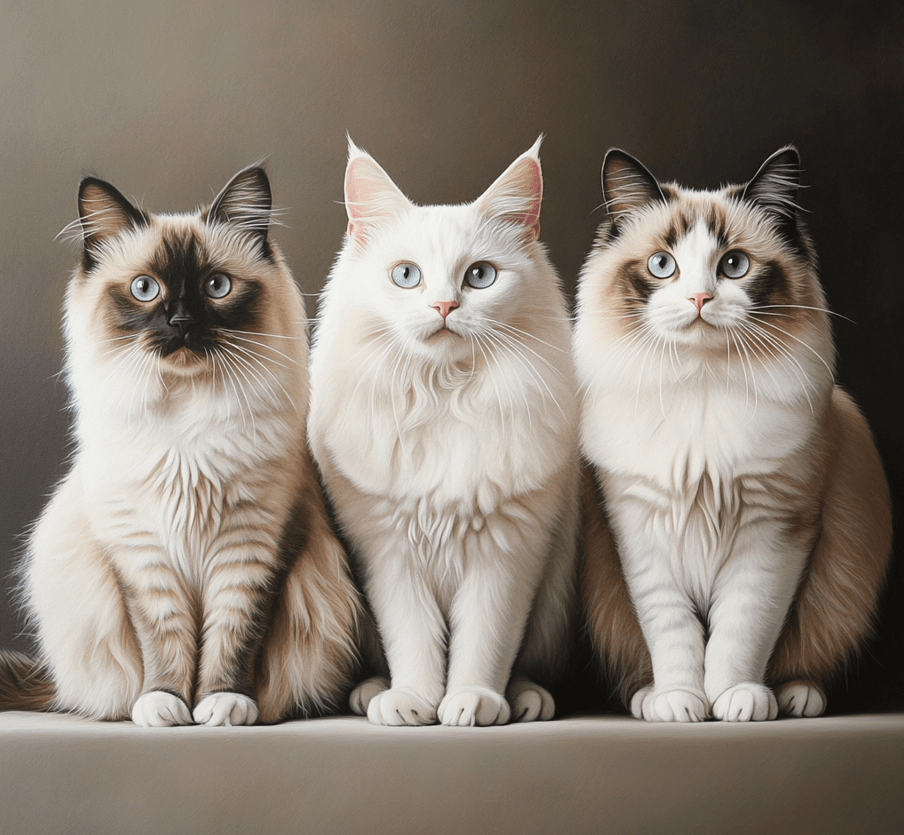
Indoor Fit: Indoor life allows constant interaction, satisfying their need for attention, a trait you’ve explored in bonding and clinginess articles.
Risk Outdoors: Time away from owners can cause stress or anxiety, diminishing their quality of life.
3. Physical Characteristics
Ragdolls’ semi-long coats and large, soft bodies are better suited to indoor environments.
Indoor Fit: Controlled climates prevent coat matting or overheating, while soft surfaces suit their relaxed lounging habits.
Risk Outdoors: Their plush fur attracts burrs, dirt, or parasites, and their size makes them less agile in escaping danger.
4. Lack of Street-Smarts
Unlike feral or outdoor-savvy breeds, Ragdolls lack the instincts to navigate traffic, predators, or territorial disputes.
Indoor Fit: A safe, familiar home eliminates these risks, allowing them to focus on play and rest.
Risk Outdoors: Their curiosity without caution increases the likelihood of accidents or getting lost.
5. Sensitivity to Environmental Stress
Ragdolls are sensitive to loud noises, sudden changes, or unfamiliar settings, which are common outdoors.
Indoor Fit: A quiet, stable home reduces stress, promoting emotional well-being, as you’ve discussed in stress-related content.
Risk Outdoors: Exposure to cars, dogs, or strangers can cause anxiety or fear-based behaviors.
Risks of Outdoor Life for Ragdoll Cats
Allowing Ragdolls outdoors, even briefly, exposes them to significant dangers that underscore their preference for indoor life. Key risks include:
Predators: Dogs, coyotes, or other cats can attack, especially given Ragdolls’ non-aggressive nature.
Traffic: Their lack of agility and road awareness increases the risk of car accidents.
Toxins: Exposure to antifreeze, pesticides, or poisonous plants can be fatal.
Parasites and Diseases: Fleas, ticks, worms, or feline diseases (e.g., FIV) are more prevalent outdoors.
Theft or Loss: Ragdolls’ striking appearance makes them targets for theft, and their trusting nature may lead them to wander.
Weather Extremes: Harsh cold or heat can harm their coat or health, especially in unprotected environments.
Indoor life eliminates these risks, ensuring your Ragdoll’s safety and longevity, which aligns with your focus on health and safety in previous articles.
Benefits of Indoor Life for Ragdoll Cats
Keeping Ragdolls indoors offers numerous advantages that enhance their quality of life:
Longer Lifespan: Indoor cats live 12–18 years on average, compared to 2–5 years for outdoor cats, due to reduced risks.
Improved Health: Lower exposure to parasites, diseases, and injuries promotes vitality.
Stronger Bonds: Constant proximity fosters deeper connections, as you’ve emphasized in bonding content.
Clean Coats: Indoor environments keep their fur pristine, reducing grooming needs, a topic you’ve covered.
Mental Comfort: A stable home minimizes stress, supporting their sensitive nature.
Safety Tips for Keeping Ragdoll Cats Indoors
To ensure your Ragdoll thrives indoors, implement these practical, vet-approved safety tips to create a secure, enriching environment.

1. Secure Windows and Doors
Ragdolls’ curiosity can lead them to explore open windows or doors, risking escapes.
How to Do It:
1.Install sturdy window screens or guards to prevent falls or escapes.
2.Use door stoppers or automatic closers to avoid accidental openings.
3.Check balconies for gaps and add netting if needed.
Pro Tip: Place a cat tree near windows for safe viewing, satisfying their curiosity.
Benefit: Prevents accidents while allowing environmental engagement.
2. Remove Household Hazards
Indoor dangers like toxic plants or small objects can harm your Ragdoll.
How to Do It:
1.Remove toxic plants (e.g., lilies, pothos) and replace with cat-safe options like cat grass.
2.Secure cords, strings, or small items that could be chewed or swallowed.
3.Store chemicals (e.g., cleaning supplies, antifreeze) in locked cabinets.
Pro Tip: Use cord organizers to bundle loose wires, reducing chewing risks.
Benefit: Creates a safe space, aligning with your health-focused content.
3. Provide Ample Enrichment
Indoor life requires stimulation to prevent boredom, a concern you’ve addressed in puzzle feeder and mental stimulation articles.
How to Do It:
1.Offer interactive toys like feather wands, laser pointers, or puzzle feeders (e.g., Trixie Activity Fun Board).
2.Install cat trees, shelves, or tunnels for climbing and exploration.
3.Set up window perches for bird-watching to engage their senses.
Pro Tip: Rotate toys weekly to maintain interest and mimic novelty.
Benefit: Keeps Ragdolls mentally and physically active, reducing stress.
4. Maintain a Clean Litter Box
A clean, accessible litter box is essential for indoor Ragdolls, supporting their fastidious nature.
How to Do It:
1.Provide one litter box per cat, plus one extra, in quiet, private locations.
2.Use unscented, dust-free litter to avoid respiratory irritation.
3.Scoop daily and clean boxes weekly with pet-safe disinfectant.
Pro Tip: Choose large boxes to accommodate Ragdolls’ size, like the Petmate Giant Litter Pan.
Benefit: Promotes urinary health, a topic you’ve emphasized.
5. Ensure Proper Nutrition and Hydration
A balanced diet and hydration support indoor Ragdolls’ health, preventing obesity and hairballs, as you’ve discussed in diet articles.

How to Do It:
1.Feed high-quality wet or dry food with adequate protein and fiber.
2.Provide fresh water via a pet fountain (e.g., Catit Flower Fountain) to encourage drinking.
3.Monitor portions to maintain a healthy weight, given Ragdolls’ sedentary tendencies.
Pro Tip: Add wet food to increase moisture, aiding digestion and urinary health.
Benefit: Enhances overall vitality and coat condition.
6. Schedule Regular Veterinary Care
Routine checkups catch health issues early, ensuring your indoor Ragdoll stays healthy.
How to Do It:
1.Schedule annual exams, including dental checks and vaccinations.
2.Monitor for signs of illness (e.g., lethargy, appetite changes) and consult a vet promptly.
3.Discuss indoor-specific concerns like obesity or dental disease.
Pro Tip: Keep a health log to track symptoms or changes for vet visits.
Benefit: Prolongs lifespan and prevents chronic issues.
7. Create a Stress-Free Environment
A calm home reduces anxiety, supporting Ragdolls’ sensitive nature, as you’ve explored in stress-related content.
How to Do It:
1.Provide safe spaces like cozy beds or hiding spots for relaxation.
2.Maintain a consistent routine for feeding, play, and grooming.
3.Use calming aids like Feliway diffusers during disruptions (e.g., guests, renovations).
Pro Tip: Engage in slow blinks and soft voices to reinforce a soothing atmosphere.
Benefit: Enhances emotional well-being and bonding.
8. Supervise Outdoor Alternatives Safely
If your Ragdoll craves outdoor stimulation, provide safe alternatives to satisfy their curiosity.
How to Do It:
1.Build a catio (enclosed outdoor patio) for fresh air and views without risks.
2.Use leash training with a harness for supervised walks, as you’ve mentioned in bonding activities.
3.Install window perches or cat-safe grass pots for indoor “outdoor” experiences.
Pro Tip: Start leash training indoors to build confidence before outdoor ventures.
Benefit: Offers stimulation while maintaining safety.
Common Mistakes to Avoid
When keeping Ragdolls indoors, steer clear of these pitfalls:
Ignoring Enrichment: Lack of toys or activities leads to boredom and stress.
Neglecting Safety Checks: Unsecured windows or hazards increase accident risks.
Inconsistent Routines: Irregular schedules can cause anxiety in sensitive Ragdolls.
Overfeeding: Excess food leads to obesity, a concern you’ve addressed.
Skipping Vet Visits: Delayed checkups may miss early signs of health issues.
Conclusion
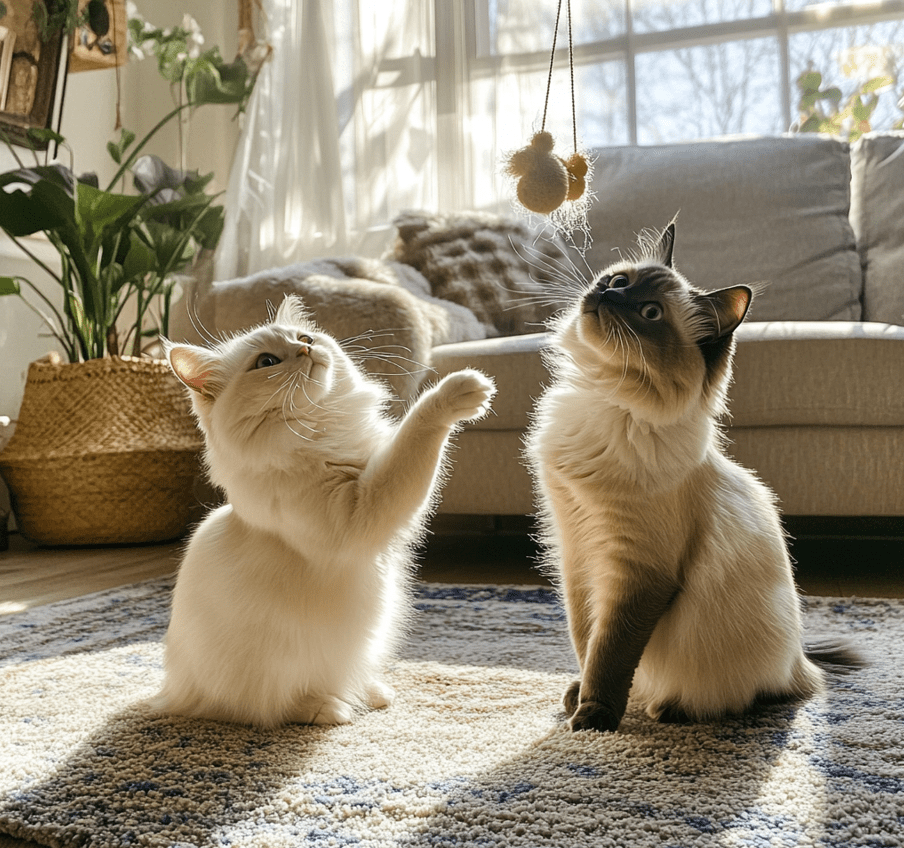
Ragdoll cats prefer indoor life for their safety, comfort, and emotional well-being, thriving in environments where they can bond with owners and avoid outdoor dangers. By securing your home, providing enrichment, ensuring proper nutrition, and offering safe outdoor alternatives, you can create a nurturing space for your Ragdoll. These strategies align with your goal of delivering high-value content, addressing real concerns like safety and health for Ragdoll owners.
Implement these safety tips today to ensure your Ragdoll enjoys a long, happy life indoors. For tailored advice, consult your veterinarian or a feline behaviorist. With care and attention, your Ragdoll will flourish as your loyal, loving companion.


